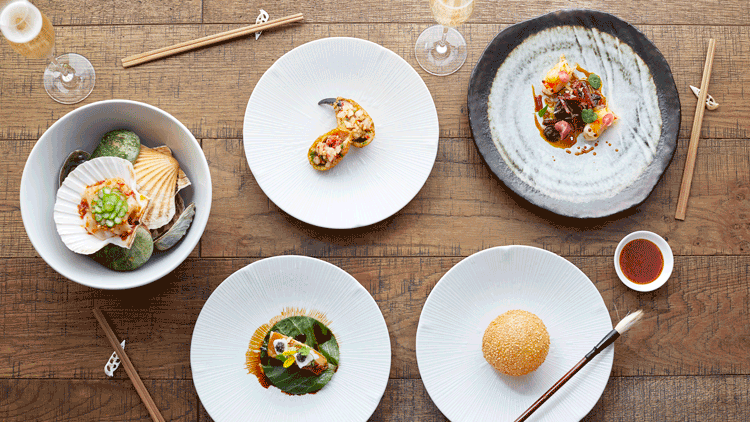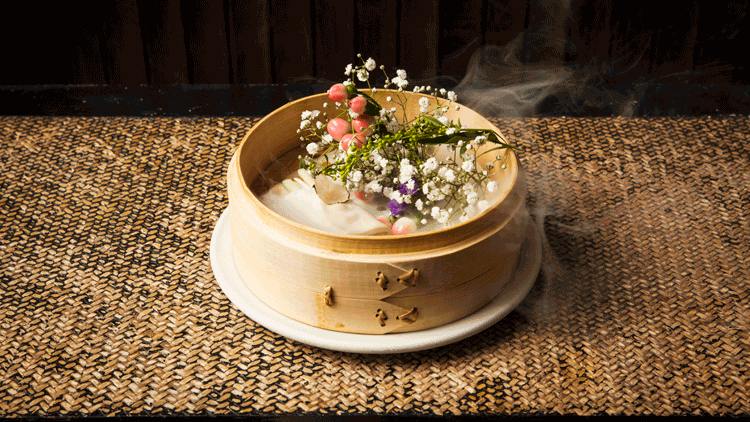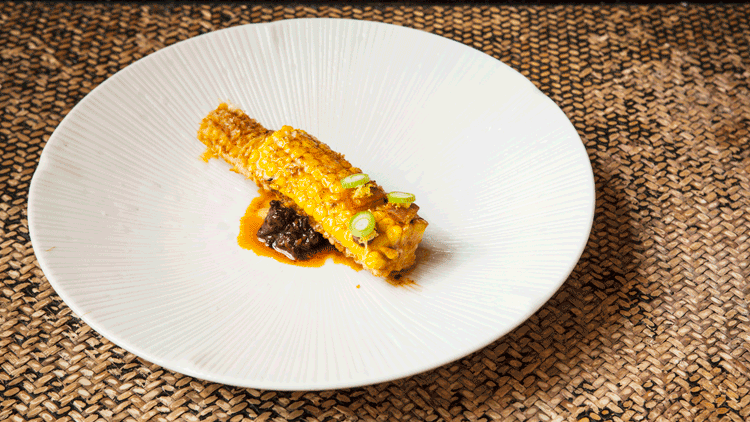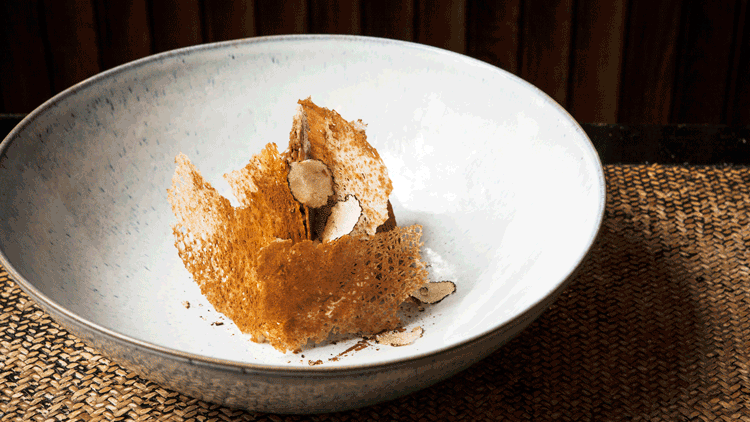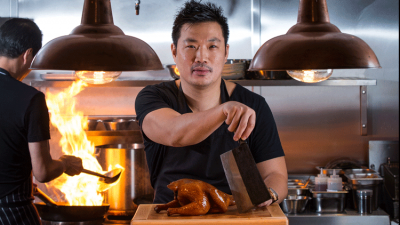Delving into dim sum: why chef Andrew Wong has gone back to school
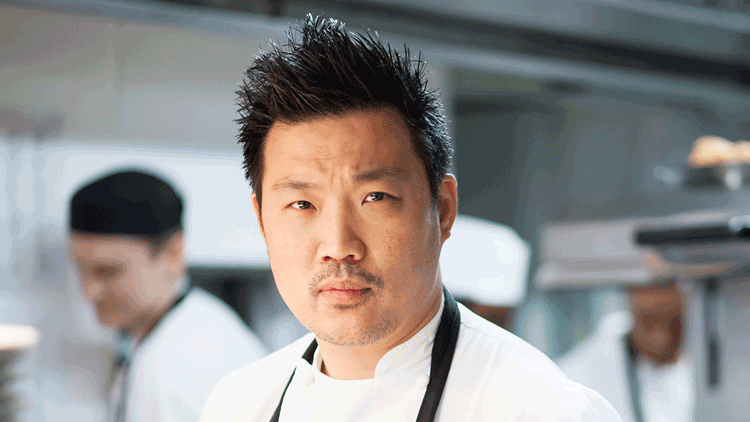
Dim sum isn’t an exclusively Cantonese endeavour - it actually has its origins in northern China - but it is Hong Kong’s take that has been exported around the world. There are around 2,000 different Cantonese dim sum items in existence but only about 50 of them get significant air time: for every basket of har gow dumplings, plate of chicken feet in black bean sauce and slice of sausage-flecked turnip cake there are dozens of traditional dishes that rarely - if ever - see the light of day.
This situation is a source of bafflement for Andrew Wong, the Michelin-starred chef behind progressive London Chinese restaurants A Wong and Kym’s. “I’m obsessed with dim sum and have stolen menus from all over the world. Whether you’re in London, Hong Kong, Dubai or the US they’re all the same. Given all that potential variety I find that incredible.”
This is but one example of China’s vast gastronomic heritage going untapped. Wong has been exploring lesser known areas of Chinese cuisine for over a decade, and is now helping to uncover more of China’s forgotten dishes and food stories following his appointment as a research associate at SOAS University of London, one of the world’s leading institutions for the study of Asian culture.
WONG IS UNIQUELY WELL-QUALIFIED FOR THE POST being both a skilled chef and a former anthropology student. Born into the restaurant business - his parents and their extended family ran several Anglo-Cantonese places in London - he was originally set on an academic path studying at Cambridge and the London School of Economics but the death of his father saw him return to the family business in his early 20s.
In common with many other third generation Chinese, Wong had grown up in restaurants but had been dissuaded from seeing them as a career option by his parents. Determined to make the best of a tragic situation, he combined his work at his parent's basic Victoria restaurant with courses at the nearby Westminster Kingsway catering college and - a few years later - relaunched it as A Wong. His skill as a cook and inquisitive mind have seen the Wilton Road restaurant become one of the UK’s most influential and creative Chinese restaurants.
The post at SOAS follows a series of collaborations with PhD student Mukta Das, whose research focuses on food and its links with cultural identity. “It’s odd to be a student again but I’m enjoying it. Plus I get access to all those sticky-floored student bars,” says Wong, whose main role at SOAS is to bring a chef’s perspective to the research.
I’m a very practical person who’s
got a low tolerance for bullshit"
“I might have a background in academics but I’m a very practical person who’s got a low tolerance for bullshit. I remember clashing with my anthropology lecturer at LSE a few times because I didn’t agree with some of his theories.”
There’s a huge amount of material to analysis going back thousands of years: everything from the meticulous meal logs kept by various emperor’s physicians to poetry, novels and other forms of literature. “It’s not a particularly organised process. People think that when you work with an academic you sit down and go through everything in a methodical way but it’s not like that. Our approach to the research is quite free form."
Wong’s role is to help Das and her colleagues understand recipes and dishes and why things were done a certain way. “I can often identify problems with recipes. Because of translation issues things can be a bit off, especially with processes. From a culinary perspective a lot of it doesn’t make much sense. I try to put myself in the shoes of the person cooking it or eating it. But really this is about getting academics to think a little bit like chefs and to get chefs to think a little bit like academics.”
In return, Wong gets access to a treasure trove of culinary inspiration to drive menu development at A Wong. The timing is perfect, with A Wong currently evolving from a restaurant that showcases the intricacy of Chinese technique and the diversity of its culinary repertoire to one that’s more concerned with telling stories.
“This isn’t about recreating recipes. There’s less fun in that. And it must also be said that a lot of these ancient recipes sound pretty disgusting. That’s often because Chinese food is so closely interlinked with medicine. Often dishes were conceived for their health benefits rather than their culinary appeal. I just want to tell a story of the dish or a moment and create something that’s delicious.”
DIM SUM HOLDS A SPECIAL SIGNIFICANCE FOR WONG. His creative takes on xiaolongbao, layered scallop puffs and cheung fun helped get the restaurant noticed and still provide an extremely affordable way into the restaurant (the Taste of China tasting menu now costs £108, but individual dim sum can be ordered from the restaurant’s lunchtime-only a la carte for as little as £3 a piece).
He also believes it provides the ideal canvas to further explore Chinese food. “A succession of dim sum dishes is perfect for the sort of dining experience I want to offer. It’s accessible and adaptable. There’s a reason chefs like Albert Adrià (the world famous Spanish chefs behind Tickets and Enigma) are obsessed with it.”
In China, dim sum is typically seen as a tradition that should not be mucked around with. “It’s that thing that aunties eat on Sunday afternoons - it’s not something to be fucked with. But to people outside china dim sum is the perfect vehicle to push Chinese cuisine to the next level because it chimes with how people like to eat now.”
Dish development: A Wong’s delicacies created as a result of the research project
The Cantonese Kitchen
This spectacular dish is essentially a fusion of Chinese crispy roast pork and prawn toast flavoured with truffle and plum sauce. It is designed to highlight how technically skilled dim sum chefs need to be and references the innovation that took place in Cantonese tea rooms in the early 20th century. Competition was intense, so chefs looked to push the boundaries to ensure a steady flow of customers. “There are very few culinary disciplines that are more technical than dim sum,” says Wong. “The only thing that comes close is French patisserie.” The dish also links A Wong with its sister restaurant Kym’s, which is more casual and is big on Cantonese-style roast meats.
The Plum in the Golden Vase
The Plum in the Golden Vase is a Chinese erotic novel written in the late Ming dynasty (early 1600s). “It’s about a hired lady, shall we say, that kicks up a massive fuss at a banquet because she thinks the chefs have served her meat. But it’s actually something that isn’t meat cooked in such a way in resembles meat – the eponymous Plum in the Golden Vase. This opened up a whole world of meat substitutes in Chinese cuisine to explore. Everyone knows about tofu, but Chinese chefs have been creating dishes and ingredients that mimic meat for thousands of years,“ says Wong, who questions why western food companies are pouring cash in to the development of meat substitutes when much of what they are coming up with can already be found on the shelves and in the deep freezes of Chinese supermarkets. Using the book’s title as a jumping off point, Wong’s dish plays with the concept of mock meat and also people’s expectations of what Chinese cooking is. “People think Chinese people don’t eat dairy, but that’s incorrect. Cheese is made in lots of different areas of China including Guangdong (in the extreme south east of the country). They make a stretched curd cheese that’s not a million miles away from halloumi,” says Wong, who rubs said cheese with a char siu marinade before wrapping it in pastry and deep-frying (the cheese is the plum and the pastry is representative of the vase.
Barbecued Forbidden City sweetcorn, wagyu beef meat paste and truffle
This striking dish references one of the world’s most famous and fascinating dining room set-ups. Beijing’s Forbidden City hosted extraordinary banquets on a long table. “It reached all the way to the end of the Forbidden City, which is some distance,” says Wong. “People were arranged in rank order with the emperor at the top of the table with his advisors and physicians and at the bottom end you had the more menial staff. The emperor was served 99 dishes, but as you went down the ranks the selection got smaller and less elaborate. By the time you got to the bottom end it was just rice and a meat paste to help it go down – but, crucially, it was the same rice and meat paste the emperor was eating.” Wong has fused this piece of culinary history with two items he was already working on: a sweetcorn dish that was partly inspired by Taiwanese street food and a spicy meat-based condiment created to make use of A Wong’s wagyu trim. A sweetcorn cob is cut to resemble a beef rib before being steamed and grilled and served alongside an intense condiment made with scraps of wagyu, chilli bean paste, chilli paste and fresh chillies cooked down for several hours. The dish is topped with pickled sweetcorn, truffle and gold leaf. “It’s a good example of a dish that brings together lots of different pieces of research,” he says. “The dish references that story, combining the regal and the ordinary.”
Coconut water ice, bird’s nest, blackberries, dried mulberries, yoghurt and mochi
Bird’s nest – an oft misunderstood ingredient – would certainly have featured in the emperor’s meals but would have been unlikely to make it very far down the table. Created by cave-dwelling swifts, the ingredient was as pricey and hard to come by then as it is today. Wong has had an off/on relationships with bird’s nest - he did at one point create a ‘fake’ version from puffed mung beans – but his recent exploration of Chinese food history has given him the confidence to champion the real thing. “It’s a weird ingredient but it’s an important part of the cuisine. I want people to understand it.” Wong pays around £3,000 per kilo, a price tag that represents the laborious process behind it. “Somebody has to sit and pick feathers and other debris out of each piece for hours on end,” he says. “The Chinese love it because it’s incredibly high in collagen. There’s a slight aquatic aroma but there’s no taste – it’s all about the texture and its medicinal properties.” Wong combines bird’s nest with coconut water ice, blackberries, dried mulberries and mochi to create a dish that showcases this curious ingredient while challenging the notion that Chinese restaurants don’t do interesting desserts.
Postcard from Yunnan
Another dessert, Postcard from Yunnan is inspired by a story found by Das about China’s efforts to conquer Yunnan. Now a province of southwestern China, the area borders Vietnam, Laos and Myanmar and has ingredients and dishes that few would associate with China. “Mukta found this text about the Yunnanese hiding from the Han Dynasty in banana plantations in order to plot their defences. Amazingly bananas, chocolate and truffles have been grown in China for centuries. I wanted to create a dish that would use this piece of history to tell the story of Yunnan and its produce.” Wong has created a delicate chocolate fondant tart covered with banana and shavings of Yunnanese truffle. “The idea was for it to represent a banana plantation. What I’ve now arrived at doesn’t look anything like a banana plantation but I’m happy with the dish. It’s a great talking point in the restaurant – people have no idea that these ingredients come from China.”
